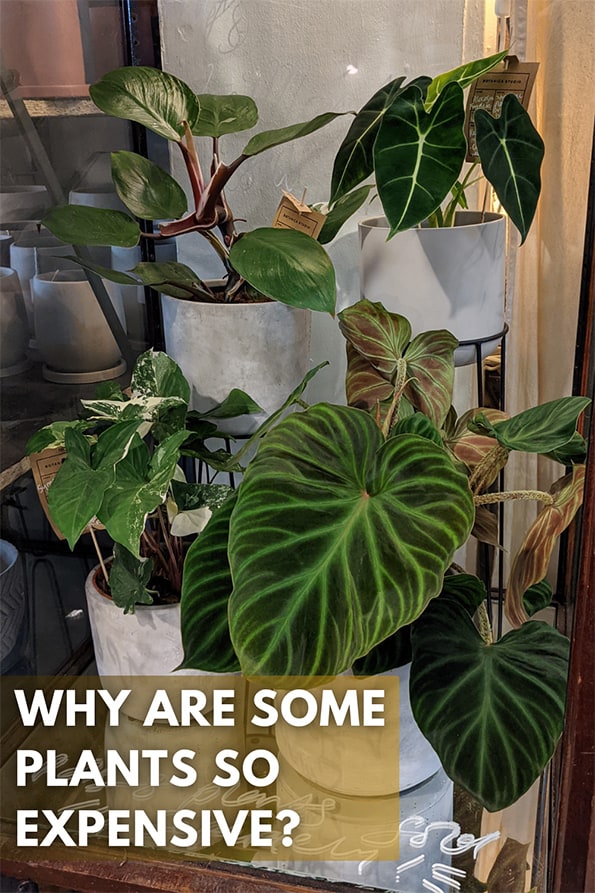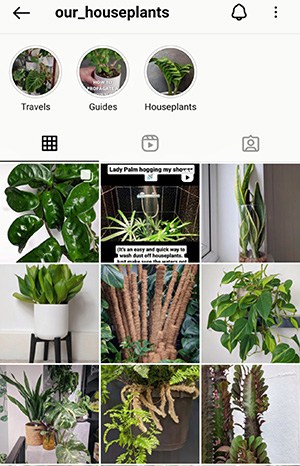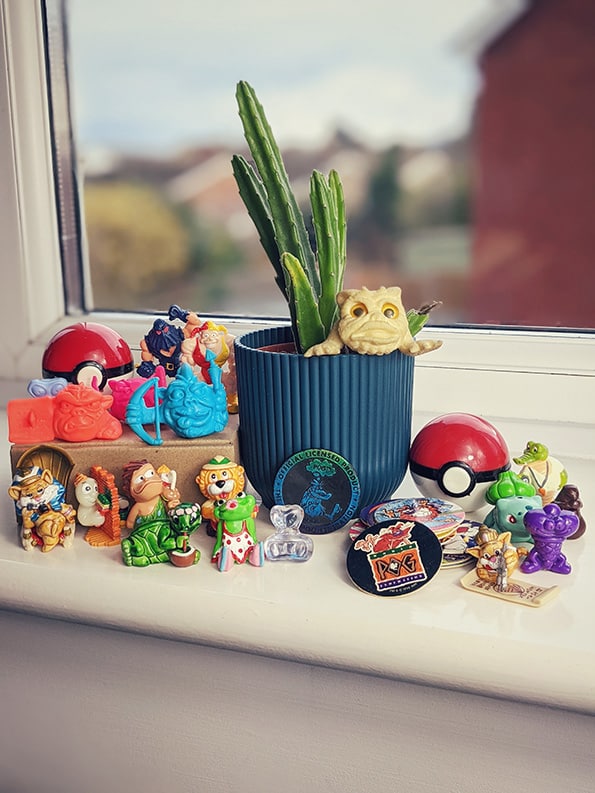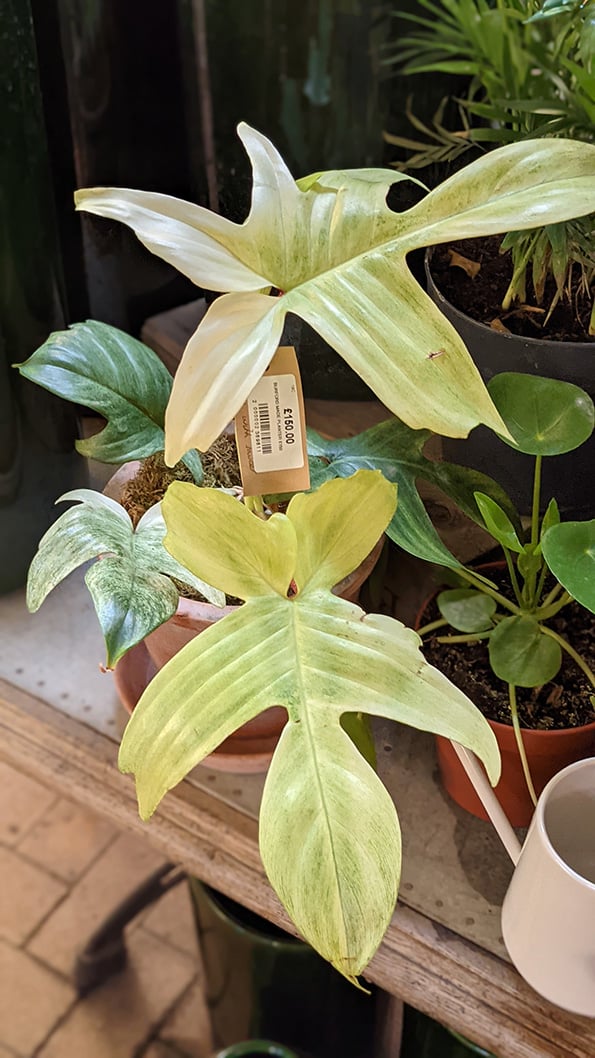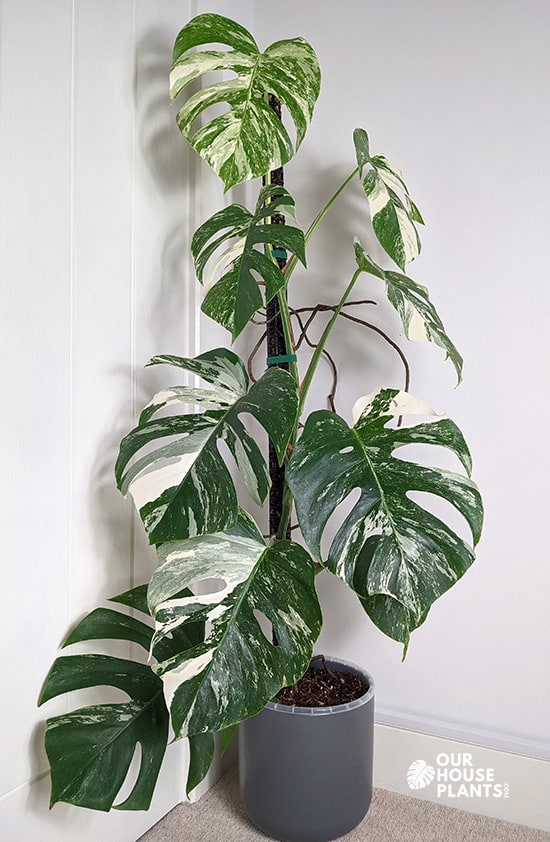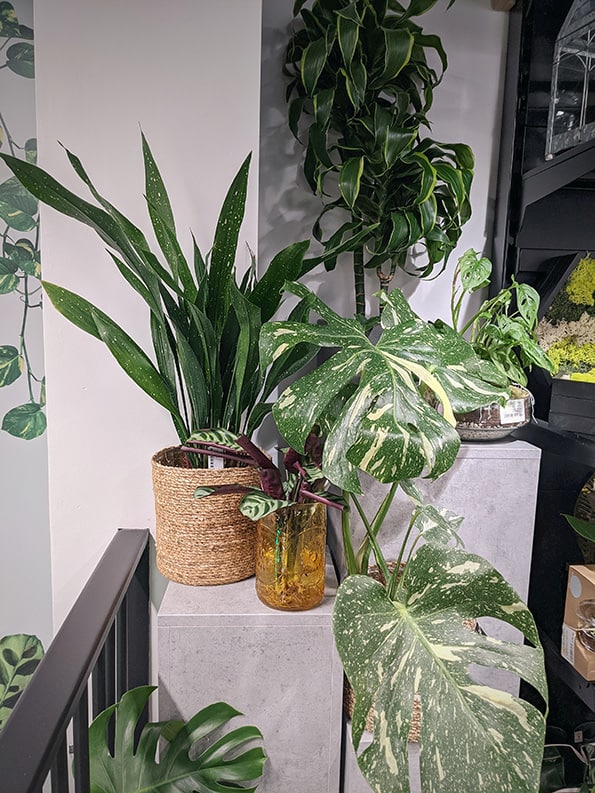Have you ever wondered why some indoor plants are so expensive? Or you've come across a section in a plant store with the most pricey houseplants ever?
"Why are they so special?" and "Who's buying them at that price?" you might be asking. These are all questions I've overheard from people in my local plant shop.
The answers come down to 6 simple psychological and practical reasons.
In recent years, variegated plants like these have become some of the most sought-after plants by houseplant enthusiasts and rare plant collectors.
Houseplants are generally considered to be a luxury item rather than a necessity. We love and can appreciate them, but they're not essential like food or water.
Demand for luxury items tends to be highly changeable, and is usually dictated by the wants and behavior of a group of people buying the products. As well as those that supply or create them in the first place.
I've been writing about houseplants for over 10 years, and I've been interested in them for at least double that. As a community, we have had hundreds of "must have" potted plants, which, in most cases, have started out pretty expensive.
But why is this? In this article, I examine the six main reasons for expensive plants. And why some plant lovers will still pay that high price tag anyway.

Hi, I'm Tom!
If you're like me and enjoy the challenge of growing houseplants and getting them to thrive, then Ourhouseplants can help. This website shares my knowledge and years of growing plants and provides (hopefully) helpful advice on properly caring for your indoor plant friends.
Often, the most expensive houseplants have psychological or sociological reasons for being so costly. Here are the main three reasons that play their part in this.
1
Social media is a powerful communication medium. And it also wields immense power to influence people. It has global reach with billions of users and is accessible to anyone with a computer or smartphone.
It also has a clever way to build community around shared interests. In this example that's going to be houseplants.
Social media can easily create buzz and interest for certain plants that people wouldn't usually be exposed to.
It doesn't even need to be "sellers" doing the influencing. Anyone who follows plant bloggers or enthusiasts will be exposed to unusual or uncommon plants (well, hello ourhouseplants!).
Whether it's exotic plants like one of the many variegated Monstera or more common ones like the Hindu Rope Plant or even Fiddle Leaf Fig Trees. Social media can create high demand for a particular plant increasing the cost sellers charge.
2
Humans have always been passionate about collecting things. Building and curating a collection provides a sense of accomplishment, ownership and satisfaction. Collecting can also be a social activity that fosters connections among like-minded enthusiasts.
With plants in particular, many collectors are also drawn to the aesthetic qualities of a specific houseplant or how the variety on offer allows personal expression.
For example, some people love foliage plants like Caladium or Ferns, while others are more into succulents like Snake Plants or Cacti. And some people (like me) just like a bit of everything.
A small collection of 1980s and 1990s toys around a Stapelia houseplant. How many do you recognize? Monster Wrestlers in My Pocket, Gogo's, Pogs, Tazos, Pokemon, Boglins, Mini boglins, and Kinder Surprise collectibles.
A "craze", demand or trend is only successful when people want more than one of the items in the set. Like every single one of the toys shown in the above photo or the vast pool of houseplants we can pick from.
Plants with large leaves, small specimens or those with a genetic mutation are examples of plants that can be "collected". Collecting something that's become popular quickly creates initial demand for it and in some cases the growers and suppliers can't keep up.
When availability is low, it becomes exclusive. The collector mentality then creates a stronger desire to own it. This means the plant sellers can ask for more because it's wanted and someone will pay for even the costliest houseplants.
3
When the demand for something outstrips supply, it can become "rare".
When looking at plant prices, they're almost always driven by demand rather than because they have a tangible value for the asking price.
This is true for most luxury items of course. For example, a Louis Vuitton handbag is not always 10 times better quality than a handbag which costs 1/10 of the Louis. Or that a Rolex watch doesn't always tell the time better than an unnamed brand.
This applies to rare plants, too. A Monstera Albo that costs $100 isn't a better houseplant than a $10 all green Monstera Deliciosa (Swiss Cheese Plant). It's just that the Albo is desired and wanted because of its markings. It's unusual but also prestigious because it has exclusivity.
Rare Plants like this Philodendron Florida Ghost was irresistible to some plant collectors back in 2022, even when the price tag was in triple digits.
When something can provide prestige or it acts as a status symbol you'll get someone who will pay a lot of money for it. Someone who wants to be one of the few to own something rare before everyone else.
If the plant is scarce, this will often cause the asking price to skyrocket, even if it's not truly worth the value it has placed on it.
It's not always psychological though. Sometimes there are physical and practical reasons as to why houseplants are expensive.
1
Limited availability of certain houseplants, especially those sourced from small-scale growers or specialty nurseries, can drive up prices due to supply constraints and increased competition among buyers.
Trends and fads within the gardening and plant enthusiast communities can significantly influence demand for specific plants. It's not always possible for the grower to predict what will be "the next big thing". So, because plants have to be bred and grown, it takes time for new plants to enter the market at scale.
If a particular plant species or cultivar is rare or difficult to find, its scarcity can drive up demand among collectors and enthusiasts. Limited availability creates a sense of exclusivity, leading to higher prices. This is what happened with the Monstera deliciosa albo variegata, back in 2020.
2
Some houseplants like Bonsai Trees or the Monstera obliqua have a slow growth rate. This makes them more costly to produce and propagate. It may take years for growers to cultivate mature plants ready for sale, increasing their price.
Certain houseplants are challenging and slow to propagate through traditional methods such as seeds or cuttings. Growers may also need to employ horticultural experts and specialized techniques or invest in expensive equipment to propagate these plants, driving up production costs.
3
When they're small, some plants just don't look very impressive compared to a bigger, mature version. For example, Monstera plants and many Philodendrons don't develop their spectacular leaves for a few years.
Understandably, people might not want to grow a small plant to the mature stage and would rather just buy it from the start.
However, as a general rule, the larger the plant the more expensive it will be.
Larger plants require more time, resources, and care to reach that size. Nurseries invest more in soil, water, nutrients, and labor to cultivate and maintain larger plants, contributing to their higher cost.
It can take several years for a plant to reach a desirable size. This means the overheads and cost of production will increase the longer the plant remains under the care of the grower. This cost has to be recouped to make it worthwhile.
Larger plants like this Aspidistra Milky Way and Monstera Thai Con offer instant gratification to buyers. Great for those who want to enjoy the benefits of a fully-grown plant without waiting for it to grow and mature over time. However, this convenience and immediate enjoyment comes at a premium price.
In my above examples I've talked about plants being luxury goods along with Louis Vuitton bags and Rolex watches. You might point out that these items always have high prices and hold their value.
The difference is that Louis Vuitton and Rolex are brands that exclusively produce their own "one of a kind" goods. They have complete control over the amount of items they produce and how much they charge with no competition.
This isn't the same with houseplants.
Many different suppliers can produce the same plants and even at home people propagate them and list them on auction sites. Because the supply of plants can't be controlled, expensive houseplants will eventually lose their value, and the overall asking price will always fall.
Here are four tips to help you get those pricey plants for less.
